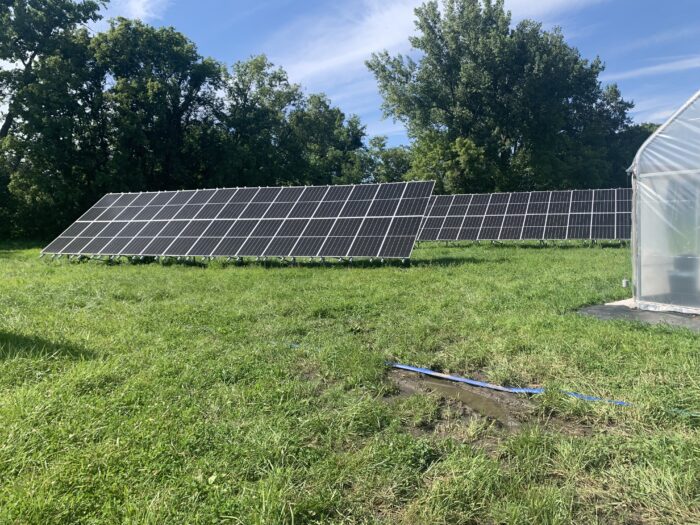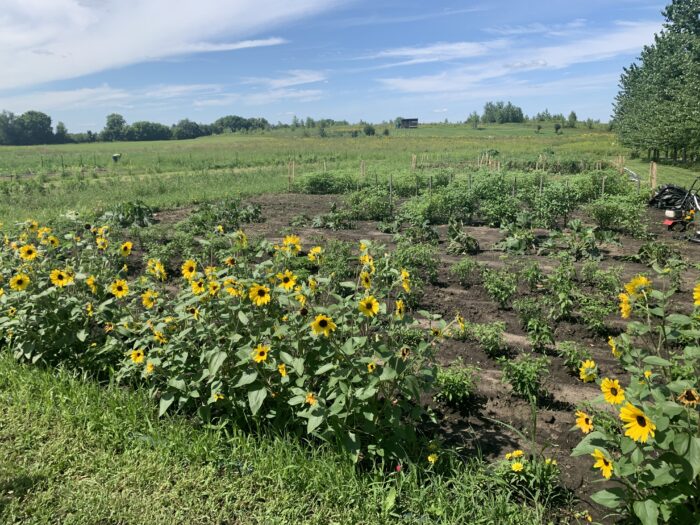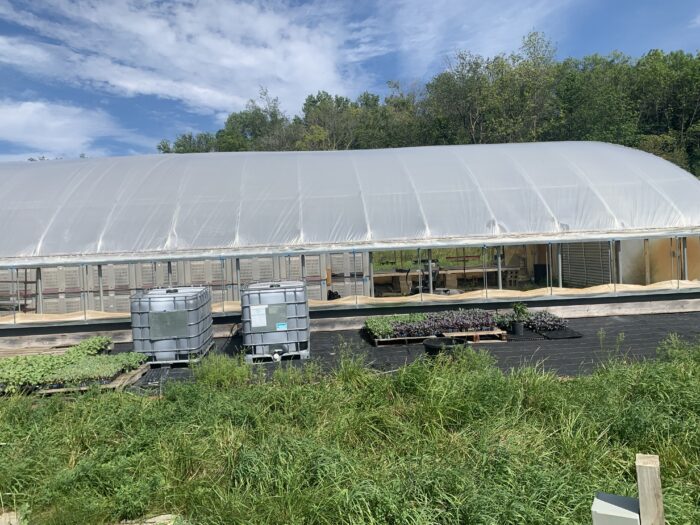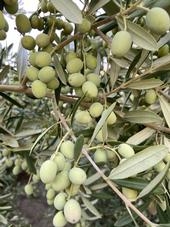Club.noww.in

Editor’s Note: This is the fourth post in a multi-part blog series analyzing the Farm Food and National Security Act of 2024 (FFNSA), which was reported out of the House Agriculture Committee on Friday, May 24. The first post details an overview of the markup process, the bill as a whole, and its likely (or unlikely) path to becoming law. The second post explores the FFNSA’s impacts on local and regional food systems. The third post assesses the bill’s potential impacts on the farm safety net, farmers’ ability to access land and capital, fair competition, and treatment of food workers. This post analyzes the bill’s potential impacts on climate resilience through the lens of conservation, research, and organic programs.
The Farm, Food, and National Security Act of 2024 (FFNSA) fails to meet the moment for farmers across the country who are on the front lines of a changing climate. From losing seed crops as wildfires rage for weeks, losing entire crops due to erratic freezes, to losing farms as drought dries up available water, farmers’ risks are rising. As weather becomes more volatile because of climate change, the need to fund technical assistance, conservation projects, and research is increasingly urgent. The U.S. public, across party lines, is concerned about the impacts of climate change on agriculture and food production.
While the FFNSA reinvests Inflation Reduction Act (IRA) funding to make permanent, long-term investments in conservation programs, it strips away the IRA’s climate focus, investing a significant amount of the remaining IRA resources in programs with minimal climate impact. In addition, rather than investing in agricultural research that benefits a broad range of farmers through the growth of more diversified and resilient farming systems, it chooses to direct limited public funding into research that promotes monoculture-based systems and benefits only a small subset of farmers. Overall, FFNSA misses the mark and fails to sufficiently address the most fundamental threat to our food and farm system.
Conservation Programs and Funding
The Inflation Reduction Act
The Farm, Food, and National Security Act of 2024 (FFNSA) rescinds all available IRA funding and reallocates it to conservation programs, but without the original climate change mitigation requirements (Sec. 2501, 2502). Reinvesting IRA funding to make permanent, long-term investments in conservation programs is the right move for this farm bill, but stripping away the IRA’s climate focus is not. Farmers have voted with their program applications, but less than half of the farmers interested in dedicated climate funding in conservation programs were able to access it last year. NSAC is disappointed to see this unnecessary revocation of sound, popular climate policy.
While the majority of rescinded IRA funding was ultimately moved into the baseline of the four working lands conservation programs originally funded through the IRA – the Conservation Stewardship Program (CSP), the Environmental Quality Incentives Program (EQIP), the Agricultural Conservation Easement Program (ACEP), and the Regional Conservation Partnership Program (RCPP) – the FFNSA also diverts $590 million of the remaining IRA resources to programs of lesser or zero climate impact (Sec. 2402, 2404, 2501, and 2405). Given the extreme weather that farmers and ranchers are experiencing nationwide, the farm bill should preserve the original intent of the IRA by reallocating funding only to those conservation programs that have the greatest potential to help farmers mitigate climate change right now.
Precision Agriculture
The FFNSA dramatically increases support for precision agriculture technologies in conservation programs (Sec. 2202, 2204, 2302). While NSAC recognizes that precision agriculture has demonstrable benefits for some operations, it remains a relatively high-cost conservation solution that does not serve all farmers. Conservation program funding is limited and providing overly robust support for practices unsuitable for all operations leads to a small set of farms consuming an outsized portion of program resources. This is an irresponsible use of limited government funding, especially when there are size- and scale-neutral management alternatives that serve far more farmers and deliver greater environmental benefits per dollar spent. NSAC calls on Congress to consider a more fair and balanced approach to supporting precision agriculture in this farm bill.
Conservation Stewardship Program (CSP)
CSP is perhaps the most impactful tool available to address climate change on farms today. The program rewards producers that build holistic conservation systems across their entire operation, investing in new practices and practice permanence over the long term – both of which are necessary to address the climate crisis. CSP is the only conservation program designed to achieve both goals. Unfortunately, the FFNSA proposes some truly damaging changes to CSP.
The bill siphons off $1 billion of CSP’s proposed funding for a new grant program supporting states and Tribes administering soil health programs (Sec. 2303). While NSAC has championed providing federal support for state and tribal soil health programs, the FFNSA’s iteration of that idea is a non-starter. Currently, only 30% of farmers applying to CSP have been able to secure contracts. It makes little sense to stretch already limited resources within such a popular program across new purposes and subprograms. Doing so would ensure that farmers interested in CSP continue to get left behind. Placing a state and tribal soil health assistance program in CSP makes even less sense given that other conservation programs, such as RCPP, are already designed to provide federal support for conservation work led by non-federal partners. NSAC hopes that Congress continues to see the wisdom of funding state and tribal soil health programs, either as a new stand-alone program as proposed in the Agriculture Resilience Act (ARA) or as part of RCPP as proposed in the Rural Prosperity and Food Security Act in the Senate. NSAC opposes diverting CSP funding for subprograms or initiatives.
The FFNSA also proposes creating Supplemental Activity Payments (SAP) for adopting and acquiring precision agriculture technologies through CSP. Currently, CSP only offers SAPs for Resource Conserving Crop Rotations, Improved Resource Conserving Crop Rotations, and Advanced Grazing Management. Each of these three conservation activities represents a holistic approach to improving conservation across an entire operation, either by requiring producers to adopt multiple practice enhancements on the same acres or to pursue ambitious, measurable soil health goals, such as increasing organic matter (OM) over the life of their CSP contract. Natural Resources Conservation Service (NRCS) offers 150% of a normal activity payment through SAPs for these high level activities because of the increased conservation benefits they create and the additional labor it takes to plan and manage such holistic systems.
However, purchasing or utilizing precision agriculture technology does not rise to the same level of stewardship as these holistic practices, nor does it require the same level of increased labor. Further, CSP already offers sufficient support for precision agriculture through five separate precision agriculture bundles that compensate producers at 115% of the normal activity payment rate. These bundle payments reflect the value of using precision agriculture technologies in concert with other base conservation practices, and NRCS already has the authority to create additional precision agriculture bundles at any time. Therefore, NSAC opposes creating additional, outsized payments for precision agriculture in CSP through the farm bill, as proposed in the FFNSA.
Within CSP, raising the minimum payment has long been a priority for NSAC to reduce administrative burden and ensure adequate cost share for smaller farms enrolling in the program. NSAC is pleased to see FFNSA create in statute a $2,500 minimum CSP payment. However, in FY2024, NRCS began offering a $4,000 minimum payment to producers enrolling right now. NSAC believes that any final farm bill should codify at least a $4,000 minimum payment, which better reflects current costs faced by smaller operations enrolling in CSP.
Finally, as noted above, the FFNSA provides increased funding for CSP by reinvesting IRA funds, stairsteping total funds available for new contracts up from $1.275 billion in FY25 to $1.375 billion in FY29. In total, the bill provides $13.5 billion in baseline funding over 10 years. This is a significant improvement as CSP has been both wildly oversubscribed and consistently underfunded in recent years.
Total Proposed CSP Funding in FFNSA by Fiscal Year (FY):
- $1.275 Billion in FY25
- $1.30 Billion in FY26
- $1.325 Billion in FY27
- $1.350 Billion in FY28
- $1.375 Billion in FY29
Again, in the FFNSA these increased funding levels come at the loss of the IRA’s climate focus. NSAC strongly supports the reinvestment of IRA funding into conservation programs’ baseline, however, the original climate focus must also be retained, or Congress will turn back the clock on popular and powerful climate policy.
Environmental Quality Incentives Program (EQIP)
EQIP is a voluntary conservation program that offers farmers and ranchers financial cost-share and technical assistance to implement conservation practices on working agricultural land. EQIP assistance is available through both a general pool and special initiatives. EQIP’s special initiatives highlight specific practices or natural resources, such as the Organic Initiative, which provides separate funding pools for transitioning and certified organic producers. The FFNSA makes several modifications to EQIP, some that are deeply concerning.
The most meaningful and problematic changes to EQIP in the FFNSA adjust which practices and farmers stand to gain the most from the program. Once again, the bill plays favorites by offering an excessive cost share – increased to 90% – for acquiring or adopting precision agriculture technology. Current EQIP payments cover 75% of costs associated with planning, design, materials, equipment, installation, labor, management, maintenance, or training needed for conservation activities that involve precision agriculture technologies. Raising the rate to 90% is an unnecessary overinvestment with the potential to exacerbate trends in farmers being turned away from the program due to insufficient funding. Further, individual states can already raise cost share rates for precision agriculture conservation activities if they deem such activities to be among their top 10 priorities for the year (16 USC 3839aa(2)(d)(7)). Therefore, mandating that all states raise cost share rates for precision agriculture to 90% is not only excessive, it stands in stark opposition to the locally-led conservation planning process that Chairman Thompson (R-PA-15) has championed.
The FFNSA maintains the existing carveout that ensures livestock producers will receive 50% of total EQIP funding during the life of the farm bill. This long standing setaside has led to significant portions of EQIP spending going towards infrastructure practices of questionable environmental value. This is a major loss, as the ARA proposed retargeting two-thirds of this carveout towards sustainable grazing practices, which have been shown to help mitigate climate change and build increased resilience to drought and floods on farms and ranches around the nation.
Additionally, the FFNSA fails to make a series of important improvements to EQIP that were proposed in Chairwoman Stabenow’s Rural Prosperity and Food Security Act (RPFSA), leaving in place long standing obstacles barring certain producers and stakeholder groups from meaningful participation in EQIP. The FFNSA fails to create a funding set-aside for small farms, as proposed in the Small Farms Conservation Act and the RFPSA, signaling loudly and clearly the FFNSA’s bias toward farmers and ranchers that have managed to amass a minimum amount of acreage. Similarly, the FFNSA does not add a requirement that NRCS State Technical Advisory Committees consult with Tribes when determining the top 10 priority practices that will receive increased cost share support through EQIP, as proposed in the RPFSA. This leaves in place a barrier for Tribes seeking to ensure EQIP addresses the most pressing natural resource concerns impacting their communities. Finally, FFNSA leaves in place a discriminatory lower payment limit for organic producers accessing EQIP. While it does increase the limit to $200,000, a small step up from the existing $140,000 organic payment limit, the FFNSA still falls well short of providing organic producers with the same payment limit of $450,000 to which all other producers are subject. The RPFSA, on the other hand, would establish equal payment limits for both organic and non-organic producers.
Elsewhere, the FFNSA does make a few changes to EQIP that are not outright harmful. The bill authorizes a producer enrolled in EQIP to receive a loan or loan guarantee through the Conservation Loan Program to cover costs for the same practices on the same land covered by the EQIP contract. Further, the Act requires the Secretary to notify producers participating in EQIP that they may be eligible to participate in the Conservation Loan Program. While this policy comes dangerously close to paying for the same conservation practices twice with different pools of public funds, if implemented well, it has the potential to be a more judicious option for providing increased support to producers without building outsized cost share rates into EQIP. NSAC is hopeful that this concept can be refined and improved as the farm bill debate continues.
The FFNSA also addresses the Conservation Innovation Grants (CIG) program. CIGs support the development and testing of promising new conservation technologies and approaches with the goal of making them available for use as quickly as possible by farmers and ranchers. In addition to providing funds directly to farmers and ranchers looking to adopt and enhance conservation practices on their land, NRCS also provides CIGs to fund projects that seek to develop and improve access to innovative conservation solutions for farmers and ranchers nationwide through on-farm pilots and demonstration projects. The FFNSA directs the Secretary to use CIGs for the development and evaluation of new and innovative technologies that may be incorporated into Conservation Practice Standards (CPS), including CPS that involve precision agriculture technology. NSAC sees this explicit instruction to use CIGs to improve CPS as positive. It’s a common sense policy that ensures the latest information USDA has on conservation practices is put to use when designing conservation practices on the ground across the country. However, NSAC again has reservations about building an overemphasis on precision agriculture technology into conservation programs.
Further, the Agriculture Improvement Act of 2018 (2018 Farm Bill) set aside $37.5 million for each fiscal year for CIG projects that address air quality, an increase from the $25 million annual allocation in the Agricultural Act of 2014 (2014 Farm Bill). The FFNSA preserves this allocation for air quality projects, though NSAC advocated for an increase to $50 million per year. Given the pressing climate crisis, more CIG funds need to be dedicated to addressing air quality concerns, especially if projects will be utilized more consistently to improve CPS under the next farm bill. Such a combination of policies would help build NRCS’ capacity to support farmers in mitigating climate change and building resilience in their operations through all conservation programs offering practice cost share.
Similarly, the 2018 Farm Bill established On-Farm Conservation Innovation Trials (On-Farm Trials), a CIG subprogram, to provide funding directly to partners, who can then offer technical assistance and payments to producers interested in implementing innovative conservation practices on their land. On-Farm Trials support the implementation of innovative approaches that have a positive conservation effect but have not yet been widely adopted by producers. NRCS is authorized to provide $25 million per year for on-farm trials. The FFNSA continues this $25M funding for on-farm conservation innovation trials, a slim silver lining given the need for more funding. On-Farm Trials have their own subprogram, the Soil Health Demonstration Trials, which focuses exclusively on conservation practices and systems that enhance soil health and increase soil carbon. Improving soil health on farms provides producers with a host of environmental and financial benefits, and as such NSAC has been advocating for at least $50 million in funding each year for this subprogram. As the farm bill debate continues, NSAC hopes Congress will consider increasing funding for these high impact CIG subprograms.
Finally, the FFNSA makes a few meaningful improvements to EQIP. The existing statute allows states to raise cost share to 90% for up to 10 practices that meet at least one of four broad environmental goals (16 USC 3839aa(2)(d)(7)). The FFNSA adds carbon sequestration and GHG reduction as a new fifth goal states can seek to address when selecting priority practices that receive 90% cost share. NSAC agrees wholeheartedly with this common sense approach to targeting conservation funds to address the climate crisis, especially since it closely mirrors the program-wide targeting of EQIP funds built into the IRA. NSAC encourages Congress to adopt this change in a final farm bill, as well as similar climate-targeting language for all major conservation programs.
Turning back to the CIG program, the FFNSA adds “perennial production systems, including agroforestry and perennial forages and grain crops” to the scope of CIG On-Farm Conservation Innovation Trials. Perennial systems are among the most powerful agriculture systems for mitigating the climate crisis, building resilience in the landscape, and realizing a host of additional conservation benefits. As such, NSAC strongly supports an explicit focus on perennial systems in the CIG program.
Finally, the FFNSA provides $29.8 billion in baseline funding for EQIP over 10 years. Funding stairsteps up from $2.4 billion in FY25 to $3.12 billion in FY29. This is a significant improvement as EQIP has been wildly oversubscribed in recent years although NSAC would prefer a portion of this massive proposed investment to be redistributed to CSP in the final farm bill.
- Total EQIP Funding Proposed by FY:
- $2.4 Billion in FY25
- $2.6 Billion in FY26
- $2.8 Billion in FY27
- $3.1 Billion in FY28
- $3.12 Billion in FY29
As noted above, in the FFNSA these increased funding levels come at the loss of the IRA’s climate-focus. NSAC strongly supports the reinvestment of IRA funding into conservation programs’ baseline, however, the original climate focus must also be retained.
Regional Conservation Partnership Program (RCPP) and Agricultural Conservation Easement Program (ACEP)
The FFNSA contains significant policy reforms to both RCPP and ACEP. NSAC will publish in-depth analysis of both programs in subsequent blog posts. However, to highlight the importance of properly reinvesting IRA funds into the farm bill baseline, the FFNSA’s proposed reinvestment of those funds for both programs is covered below.
The bill provides $4.425 billion in baseline funding for RCPP over 10 years, stairsteping total funds available for new contracts up from $400 million in FY25 to $450 million in FY29.
- Total RCCP Funding Proposed by FY:
- $400 million in FY25
- $425 million in FY26
- $450 million in FY27
- $450 million in FY28
- $450 million in FY29
The bill provides $6.75 billion in baseline funding for ACEP over 10 years, stairsteping total funds available for new contracts up from $600 million in FY25 to $700 million in FY29.
- Total ACEP Funding Proposed by FY:
- $600 million in FY25
- $625 million in FY26
- $650 million in FY27
- $675 million in FY28
- $700 million in FY29
As with CSP and EQIP, these funding increases are welcome, long overdue, and yet still problematic. The FFNSA provides increased funds but sacrifices the IRA’s climate-focus. NSAC strongly supports the reinvestment of IRA funding into conservation programs’ baseline, however, the original climate-focus must also be retained.
Alternative Manure Management Practices (AMMP)
The FFNSA does not contain a proposal to support AMMP technologies as envisioned in the ARA or the COWS Act. NSAC is disappointed to see this omission, as shifting the technologies used to handle manure on midsized livestock operations is critical to addressing agriculture’s contributions to climate change. As many parts of the country cannot transition fully to year-round, grass-based livestock systems, we believe it is vital to dedicate funding to AMMP technologies to ensure that instances where confinement is likely to continue are as ecologically friendly as can be. NSAC calls on the House and Senate to include the bipartisan COWS Act provisions in a final farm bill.
Grazing Lands Conservation Initiative (GLCI)
The FFNSA maintains the current appropriations authorization of $60 million per year for GLCI. NSAC believes strongly that grazers need dependable access to technical assistance and that such funding should not be subject to the whims of the annual appropriations process. Therefore, GLCI needs a minimum of $50 million per year in mandatory funding to provide sufficient funding to meet the strong demand for technical assistance and ensure such assistance is provided without interruption.

Research, Education, and Extension Programs
In comparison to the enormous opportunity that sustainable agriculture represents for farmers and rural communities, federal investment in sustainable agriculture research, education, and extension has been minuscule. Without robust funding for public research that promotes ecologically-based production systems, scientific and technical innovation is stifled, and U.S. farmers and ranchers are unable to fully participate in and benefit from emerging markets for sustainably-produced foods. At a time when the effects of climate change on farmers are becoming ever more apparent and the country is losing small and mid-sized family farms at a rapidly increasing rate, the FFNSA maintains the status quo. Instead of investing in research and innovation that builds on-farm resilience and moves our food and farm system forward, the bill continues down the same detrimental path for the next five years.
Sustainable Agriculture Research and Education (SARE) program
While FFNSA meets the low bar of reauthorizing popular sustainable and organic research programs like the SARE program and the Organic Agriculture Research and Extension Initiative (OREI), the bill does not include additional funding for either program. SARE was first created in 1988, and in 1990 Congress authorized the SARE program and determined that it should be funded at no less than $60 million a year, consistent with recommendations by the National Academy of Sciences. However, after over 30 years as USDA’s only farmer-driven, sustainable agriculture competitive research grant program, SARE has yet to see an increase in funding authorization. Combined with inflation, level funding for SARE in a new farm bill would effectively amount to a funding cut.
SARE provides farmers and researchers with vital opportunities to better understand agricultural systems, increase profitability, and build resilience to climate change. Farmers and ranchers have critical insight when it comes to improving their systems. Yet, the demand for farmer-led research continues to outpace federal funding. According to SARE’s 2023-2024 Biannual Report From the Field, less than half of eligible Farmer Rancher Grant proposals were funded from 2022-2023.
Organic Agriculture Research and Extension Initiative (OREI)
OREI is one of a still limited number of research, education, and extension programs that provide focused support for organic systems. Strong investments in research underpin growth in numerous sectors, as all farmers – sustainable, organic, conventional, or otherwise – rely on cutting-edge research to maintain robust and thriving operations. Although FFNSA maintains level funding for OREI, it does not reflect the growth of the organic market since 2018 or the current challenges facing organic farmers. Level funding fails to provide the organic sector with the tools to create thriving businesses in the face of changing weather patterns and shifting markets.
Precision Agriculture
FFNSA’s focus on precision agriculture, automation, and “high risk high priority research” across the research title detracts from much needed investments in farmer-led, scale-appropriate research. Programs like the Agriculture Advanced Research and Development Authority, a $20 million carve out in the Speciality Crop Research Initiative (SCRI) for mechanization and automation, and a greater emphasis on automation and precision agriculture in the Agriculture and Food Research Initiative (AFRI), demonstrate a continued quest for reductionist or “silver-bullet” solutions to climate change and other agricultural challenges.
While NSAC supports research that directly contributes to “a reduction in, or improved efficiency of, inputs used in crop or livestock production the concern,” it is clear that the prevailing narrative surrounding these types of agriculture research is aimed not at improving diversified systems, but at further enabling large-scale, monoculture agriculture. This approach is misguided given the ample evidence that scale-neutral, management-intensive practices likely yield even greater environmental benefits. USDA funding should be directed toward building an understanding of the ecological aspects of our food and farm systems and integrating the diverse knowledge and practices of agroecological farmers and farm workers, rather than continuing to explore and promote the narrow constraints of monoculture-based systems.
Agriculture and Food Research Initiative (AFRI)
NSAC is pleased to see some inclusion of the ARA in FFNSA’s proposal for AFRI. For example, we welcome the addition of regionally adapted cultivar and breed development, breeding for environmental resilience, and the addition of workforce training and development, including meat and poultry processing in the agriculture economics and rural communities priority area. However, these new additions alongside several others – like controlled-environment agriculture production and precision agriculture – all come without any additional funding for AFRI, spreading the program across many issues areas, likely resulting in the program’s limited ability to support more agroecologically focused agricultural research.
Farming Opportunities Training and Outreach (FOTO) program
FFNSA reauthorizes FOTO and maintains $50 million in mandatory funding. FOTO was a new initiative established in the 2018 Farm Bill that combined two of USDA’s flagship training and technical assistance programs for historically underserved farmers – the Beginning Farmer and Rancher Development Program (BFRDP) and the Section 2501 program. However, management of BFRDP was kept under the National Institute of Food and Agriculture (NIFA), while management of 2501 was moved into the newly created Office of Public Partnerships and Engagement (OPPE). In addition to maintaining mandatory funding for FOTO established in the 2018 Farm Bill, FFNSA proposes moving the management of 2501 back to NIFA.
1890 Land Grant Institutions
NSAC was pleased to see FFNSA provide several important investments in 1890s Institutions, including increasing mandatory funding for the 1890s Scholarship program to $100 million until expended, increasing funding for 1890s Extension from its current 20 percent to no less than 40 percent, and increasing the number of 1890 Centers of Excellence from no less than 3 to no less than 8.

Organic Programs
Considering the potential that organic practices have to increase farm revenue, preserve and enhance the environment, and provide healthy food to communities, the lack of support in FFNSA for the continued growth of the organic sector is disappointing. Rather than providing the necessary resources to keep pace with the growth of organic food and farm systems, FFNSA would stifle one of the fastest growing sectors of American agriculture.
National Organic Program (NOP)
FFNSA caps funding for the National Organic Program (NOP) at $24 million annually and does not increase the funding level over the life of the farm bill. In addition, the bill authorizes NOP to provide technical assistance to farmers transitioning to organic but does not provide any additional funding to support TA. NOP currently oversees more than 46,000 operations in more than 100 countries, and the organic sector continues to grow. NOP’s expanded authority, coupled with the growth of the organic sector, signals the need for more, not level, funding to adequately enforce organic regulations, provide TA to transitioning farmers, and tackle fraud in organic supply chains.
Organic Certification Cost Share Program
The bill also only provides $8 million annually for the Organic Certification Cost Share Program. This funding level is not even enough to fully fund the program in FY24, and the cost of the program is expected to continue to rise over the next five years as more operations participate in organic certification and the cost of organic certification increases. The cost of organic certification has risen more than 85% since 2012 and continues to rise.
Organic Transition Initiative
While the Rural Prosperity and Food Security Act framework introduced by Senate Agriculture Committee Chairwoman Debbie Stabenow (D-MI) includes several elements of the newly launched USDA Organic Transition Initiative, the FFNSA does not include these same provisions. Instead, the bill opts not to fund organic market development, nor does it fund USDA partnerships with nonprofits to help farmers transition to organic agriculture.
The Transition to Organic Partnership Program (TOPP) is one of the most popular pieces of OTI. TOPP allows USDA Agricultural Marketing Service (AMS) to enter into cooperative agreements with non-profit organizations partnering with others to provide technical assistance and wrap-around support for transitioning and existing organic farmers. While FFNSA expands NOP authority to allow the program to provide technical assistance, as mentioned above, the bill provides no additional funding for this purpose. The lack of dedicated funding for transition technical assistance – whether provided through NOP or by permanently authorizing TOPP in the farm bill – will greatly reduce the effectiveness of AMS and non-profit partnerships across the country to serve organic and transitioning to organic farmers. However, the bill does increase mandatory funding for the Organic Data Initiative from $5 million to $10 million, which will expand and improve organic data collection and analysis efforts within AMS.
The post Digging into the House Farm Bill: Part 4 appeared first on National Sustainable Agriculture Coalition.












 English (US)
English (US)